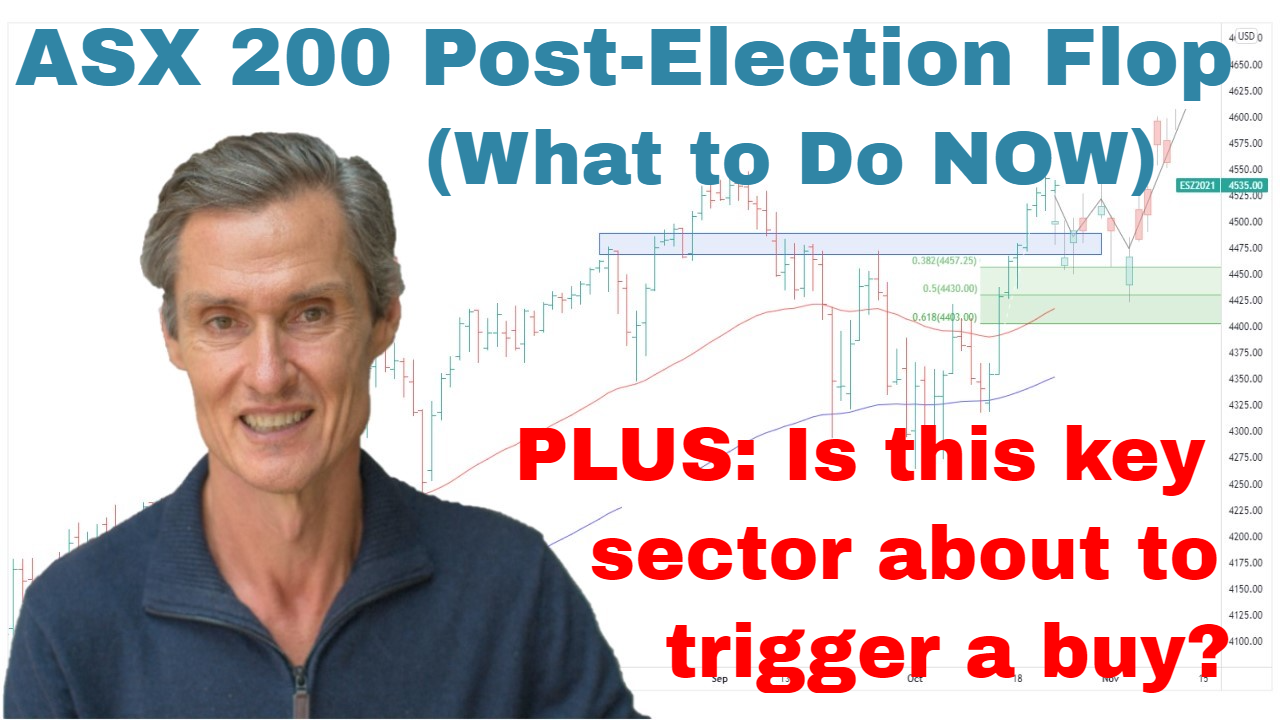ASX 200 Technical Analysis: Navigating Market Trends and Breakouts | Episode 261

By Jason McIntosh | 8 November 2024
The Australian Securities Exchange (ASX) 200 has been exhibiting fascinating price action recently, particularly in the wake of the U.S. elections. In this post, we will conduct a technical analysis of the ASX 200, exploring its recent movements and potential future scenarios.
Understanding the ASX 200’s Recent Price Action
The ASX 200 has shown significant volatility over the past few days, with sharp swings in both directions. A 15-minute chart reveals how the market rallied on the prospect of a Trump victory, only to give back those gains after market close. This pattern of rallying and retracing continued, highlighting the uncertainty surrounding the election results.
The Importance of Chart Structure in Technical Analysis
Despite recent market uncertainty, the ASX 200’s chart structure remains largely unchanged from previous weeks and months. For those new to ASX 200 technical analysis strategies, here are two key steps to analyze a chart:
- Examine the moving averages (in this case, the 50-day and 100-day).
- Observe price action relative to these averages.
Currently, the ASX 200 shows rising 50-day and 100-day moving averages, with the price above both. This configuration defines a bullish chart structure, a pattern that has persisted throughout the year despite various pullbacks and consolidations.
Learn more about moving averages in technical analysis.
Potential Scenarios for the ASX 200
While the overall trend remains bullish, there’s a possibility of further consolidation in the coming weeks. One scenario to consider is a period of sideways movement, potentially forming a base of support before breaking higher. This consolidation could allow moving averages to catch up with the price, setting the stage for potential future gains.
Sector Analysis: Financials and Materials
Two key sectors are worth watching for potential ASX 200 breakouts:
- Financials: The ASX 200 Financial ETF, predominantly composed of major banks, is making new all-time highs. This upward trend in a crucial sector bodes well for the broader market and aligns with Australian stock market trend analysis.
- Materials: This sector, largely consisting of mining stocks, shows an interesting pattern. After a strong rally from September lows, it experienced a corrective pullback. Now, with moving averages crossing and turning higher, we may be seeing the beginning of a new uptrend—an important consideration in materials sector technical analysis ASX.
The Chinese Market: An Unexpected Influencer
While it might seem surprising, the Chinese stock market plays a significant role in the ASX 200’s performance, particularly through its influence on the materials sector. Let’s examine the China A20 index and its potential implications for Australian investors.
Recent Developments in the Chinese Market
Despite concerns about potential tariff increases following the U.S. election, the Chinese market has shown remarkable resilience. The China A20 index recently surged by 5.5% in a single day, a significant move that caught many observers off guard.
Chart Structure and Emerging Trends
The current chart structure of the China A20 index suggests an emerging uptrend. While it’s important to note that this trend is not yet fully established, the recent price action is encouraging and warrants attention from ASX investors.
Potential Impact on the ASX 200
The performance of the Chinese market is particularly relevant to Australia’s materials sector, which heavily influences the ASX 200. If the emerging uptrend in Chinese stocks continues, it could have positive implications for Australian resource exports and, by extension, the materials sector of the ASX 200.
Key Points to Consider:
- The Chinese market doesn’t always correlate directly with the ASX, but it can significantly impact specific sectors.
- A strong Chinese market could potentially offset concerns about tariffs and their effect on Australia’s resource exports.
- While an upward trend in the China A20 index is not yet confirmed, the recent 5.5% gain is a positive signal that investors should monitor.
As we continue to analyze the ASX 200 through technical analysis, keeping an eye on international markets, especially China’s, can provide valuable insights into potential future movements in key Australian sectors.
Conclusion
In conclusion, while short-term volatility may persist, the underlying technical structure of the ASX 200 remains bullish. Investors should keep a close eye on key sectors like financials and materials for potential breakout signals while being prepared for possible consolidation periods. By employing effective ASX 200 moving average crossover signals, traders can better navigate these market conditions and position themselves for future gains.
****
Want to learn more about trend following and risk management strategies?
Take a Free 2 week Motion Trader trial
****
Video Timestamps
00:00 Intro
00:30 ASX 200 fails to make a new high (look at this price action)
02:10 Can you see the most important feature on this chart? (Many can’t)
04:40 Be prepared for THIS to happen next
06:30 These 2 sectors hold the key (an opportunity maybe setting-up)
08:35 I’ve never shown this chart here (in could ignite the ASX)
10:30 SP500 has similarities to last time Trump won (but THIS is different)

Jason McIntosh | Founder, Motion Trader
Jason’s professional trading career began over 3 decades ago. He’s a founder of two stock advisory firms, a listed funds management business, and has helped thousands of investors navigate the stock market. Click here to read Jason’s incredible story of, at age 20, sitting alongside some of the world’s greatest traders (and the life changing experience that came with that).

